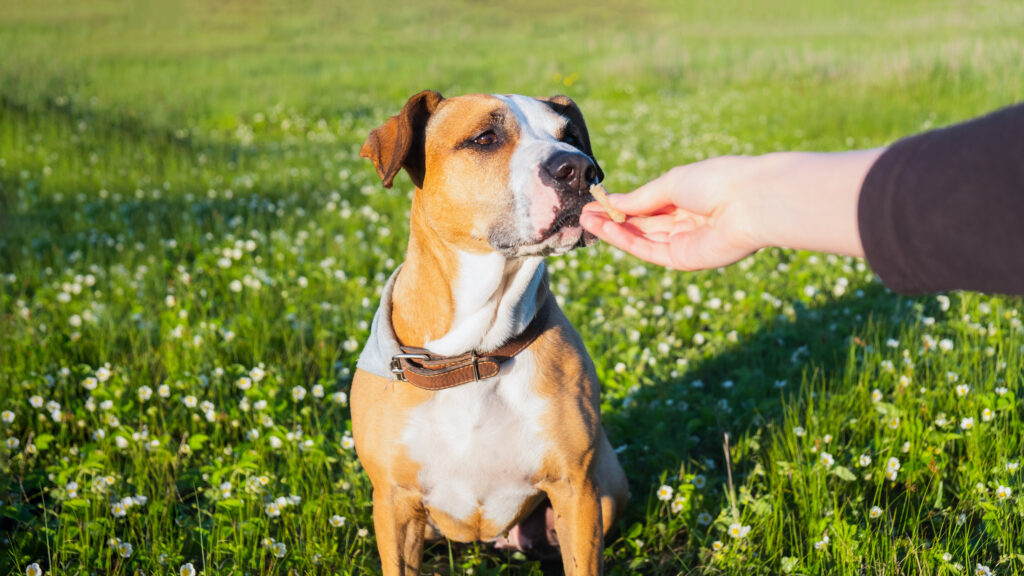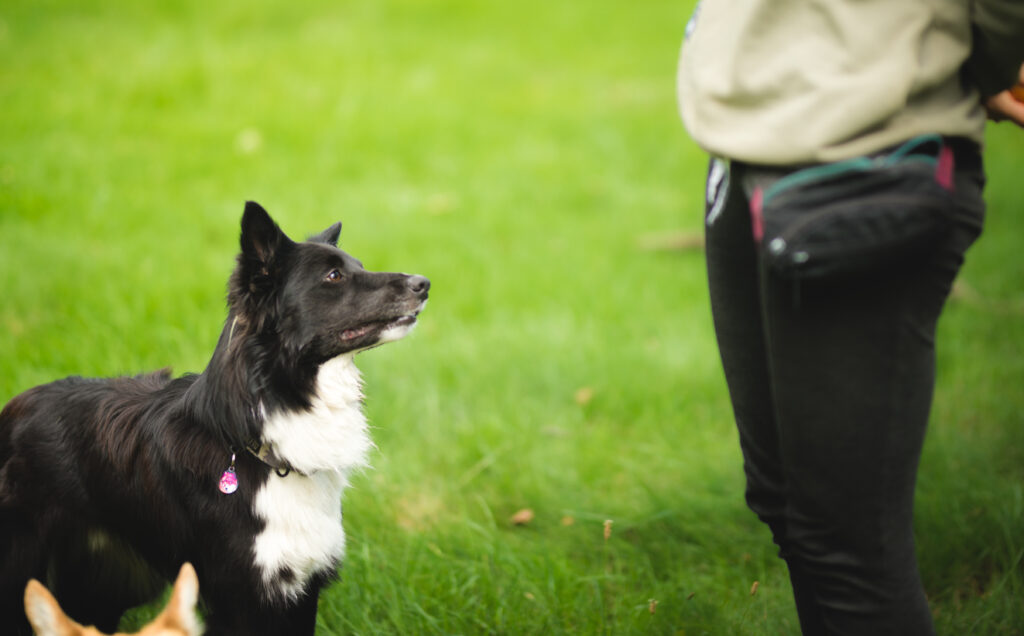Kind Corner: How to use treats in dog training – Part 3: How to fade treats

 Time to learn how to fade treats in training!
Time to learn how to fade treats in training!
After exploring the importance of treats in dog training, and how to use treats to teach and not as a bribe, AnimalKind accredited trainer Carrie Lumsden of K9 Kind Dog Training & Behaviour Consulting explains the best way to fade treats.
Let’s get reading!
You might want to read Part 1: Go ahead, use treats! and Part 2: Using treats to teach and not as a bribe.
Part 3: How to fade treats in training
Treats are extremely useful rewards to reinforce correct responses when you are training your dog. In the beginning, you were rewarding your dog for every sit, down, and stay they performed to help them stay motivated.
However, the ideal of all that training is that you can trust your dog will do as asked without needing a treat every time. Once your dog has learned the foundations of a given skill, it is time to reduce the number of treats you use through a process called ‘fading.’

When is your dog ready to fade treats?
Before you start to fade treats, ensure that your dog:
- consistently responds to the cue in different environments such as your home, in the yard, on a walk, and at the neighbourhood coffee shop, for example.
- reliably responds to the cue around a variety of distractions such as other dogs, groups of people, traffic noise, etc.
You can achieve this by practicing the behaviour in a variety of different contexts to solidify your dog’s response.
When your dog is succeeding 90% of the time when just one treat is given per behaviour, reduce the number of treats you are giving them by about 25%. Once they are succeeding with this lower rate of reward, you can decrease by a further 25%.
Schedule of Reinforcement: How often you reward your dog
Schedule of Reinforcement simply means how often you give your dog a treat. New behaviours that your dog is learning are rewarded every time, aka a continuous reinforcement schedule. In the beginning, every sit got a teat.
Now you are going to start fading the treats by using a variable reinforcement schedule. When using a variable schedule of reinforcement, you still need to make sure you’re rewarding your dogs often enough to keep motivation high. This means that you never completely phase out the use of treats.
When fading treats in training, you are simply transitioning from being a vending machine (reward every time your dog responds to a cue) to a slot machine (not guaranteed a reward for following the cue, but rewarded frequently enough that the dog keeps trying.)
You can adjust your reward schedule based on the environment you are in. For example, if you are in a busy park full of distractions, you may wish to reward your dog more frequently. However, once you are back at home, you can begin fading again.
As you gradually reduce the frequency of treats, your dog will continue to choose to follow your cues when you ask because they know it will pay off eventually.

Increase your expectation: more behaviours and better responses for fewer rewards
The final aspect to fading food rewards is to have higher expectations of your dog, for example, longer stays, faster recalls, more perfect heeling, and better performance overall, for fewer food rewards.
You can introduce this by:
- Asking your dog to do multiple things for one reward (e.g. sit, followed by down cue before rewarding.)
- Choosing to reward only the best of the behaviours, for example, the fastest sits, longer heels, longer stays, and the fastest recalls.
Remember to always work at your dog’s level. If your dog is not getting it right 90% of the time, that is a good indication that you are fading treats too quickly.
The power of treats in training
Using food treats to motivate and reward your dog’s learning is a cornerstone of humane dog training.
When treats are used correctly and awarded after the desired behaviour is completed successfully, then they are not a bribe. Treats are your dog’s paycheck for a job well done. Then, when your dog is fluent at a given behaviour, they are ready to graduate to fewer rewards for more behaviours as you introduce fading.